Lakmé Fashion Week 2025 reaffirmed the industry's dedication to mindful design and was a masterclass in fusing high fashion with sustainability. The event this year focused on the changing relationship between tradition and the future of fashion, showcasing everything from handcrafted quality to creative circularity initiatives. Here's how India's top fashion show put sustainability front and centre.
A Celebration of Handcrafted Textiles
The NIF Global presents Gennext show showcased emerging designers who championed handwoven artistry. Abhichiq celebrated textile heritage with intricate weaves, That Antiquepiece exuded royal grandeur, and Quarter emphasised handcrafted textures and drapes.
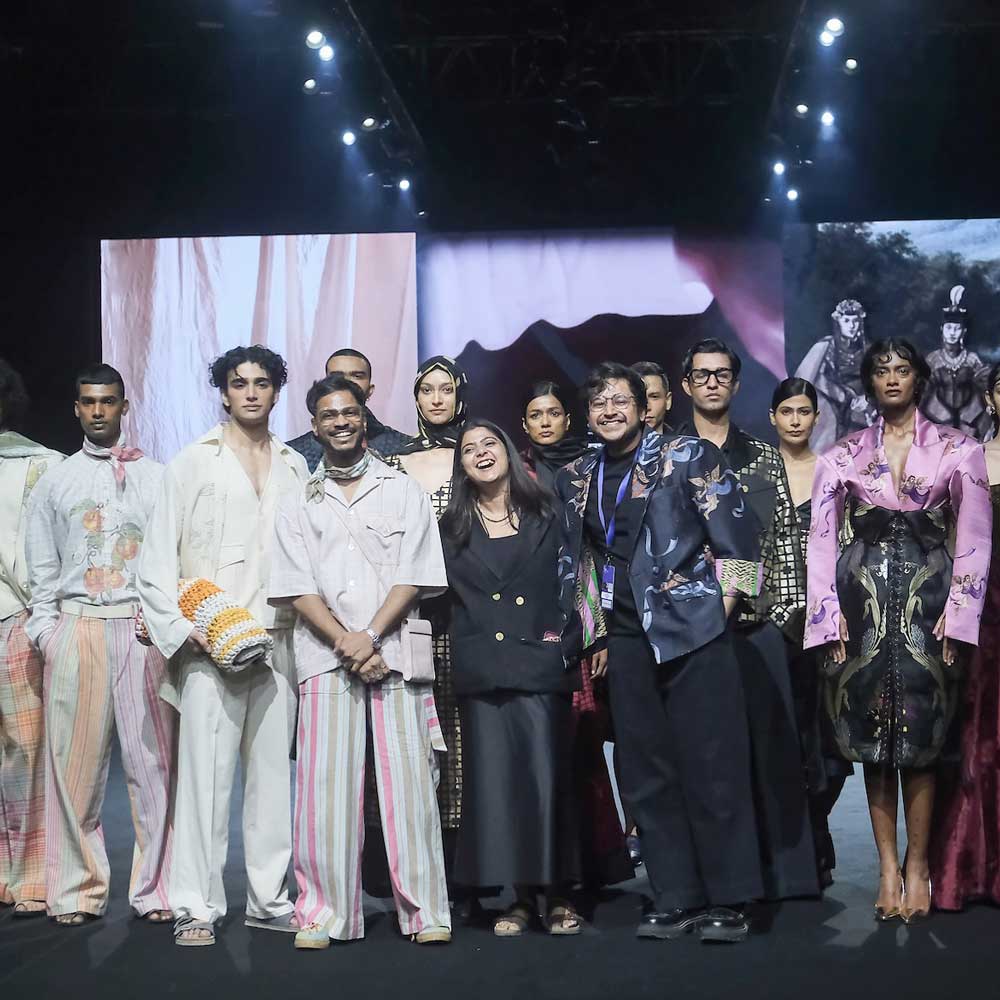
Image Source: Instagram/lakmefashionwk
Rina Singh’s EKA transported the audience into a spring-summer dreamscape, where pastels, sheer fabrics, and airy handwoven textures dominated the runway. The show highlighted the enduring charm of Indian handlooms in contemporary fashion.
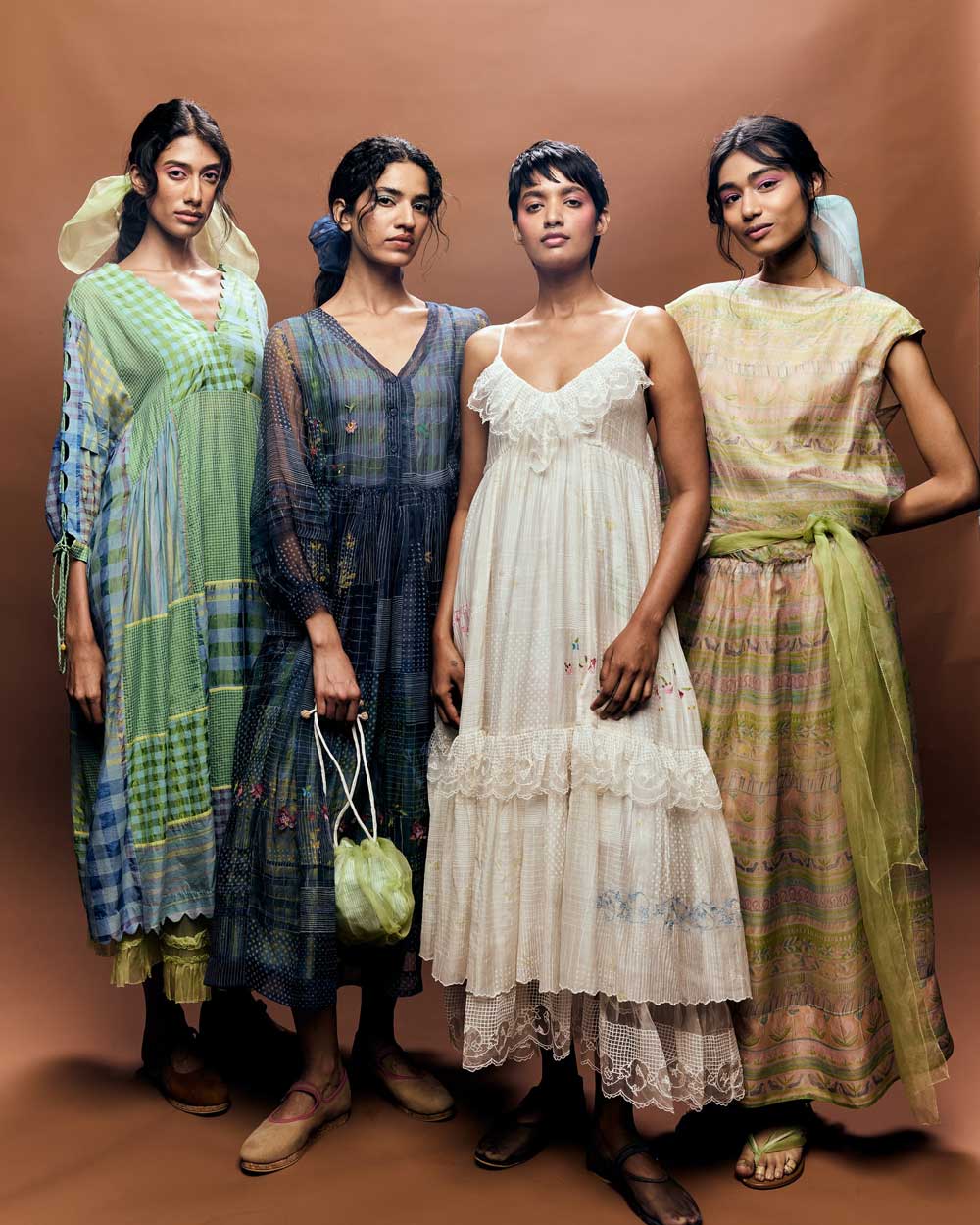
Image Source: Instagram/lakmefashionwk
Khadi India’s showcase reimagined India’s ‘freedom fabric’ through four unique lenses:
Centre of Excellence for Khadi (CoEK) played with fluid silhouettes and colour blocking.
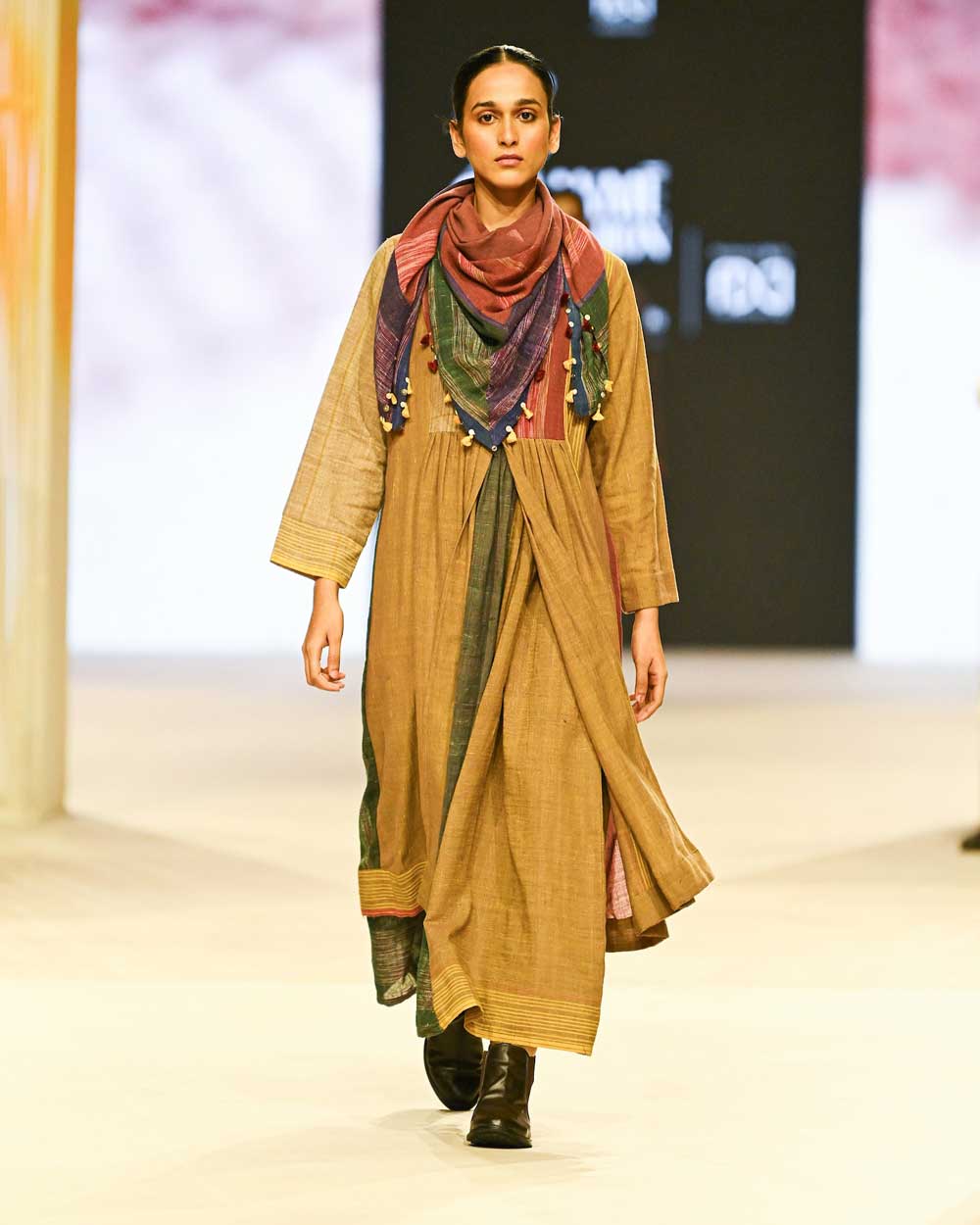
Image Source: Instagram/lakmefashionwk
Niki Mahajan gave Khadi a breezy, summer-ready update, while Nikasha redefined Khadi as festive and vibrant.
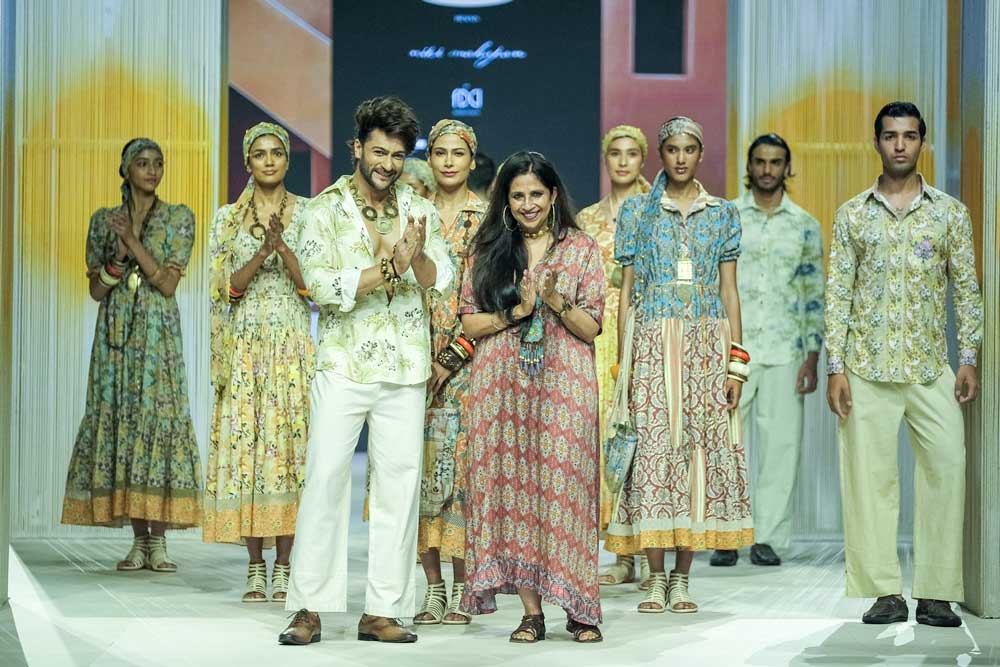
Image Source: Instagram/lakmefashionwk
Ka-Sha infused its signature geometric patterns for an avant-garde take on the fabric.
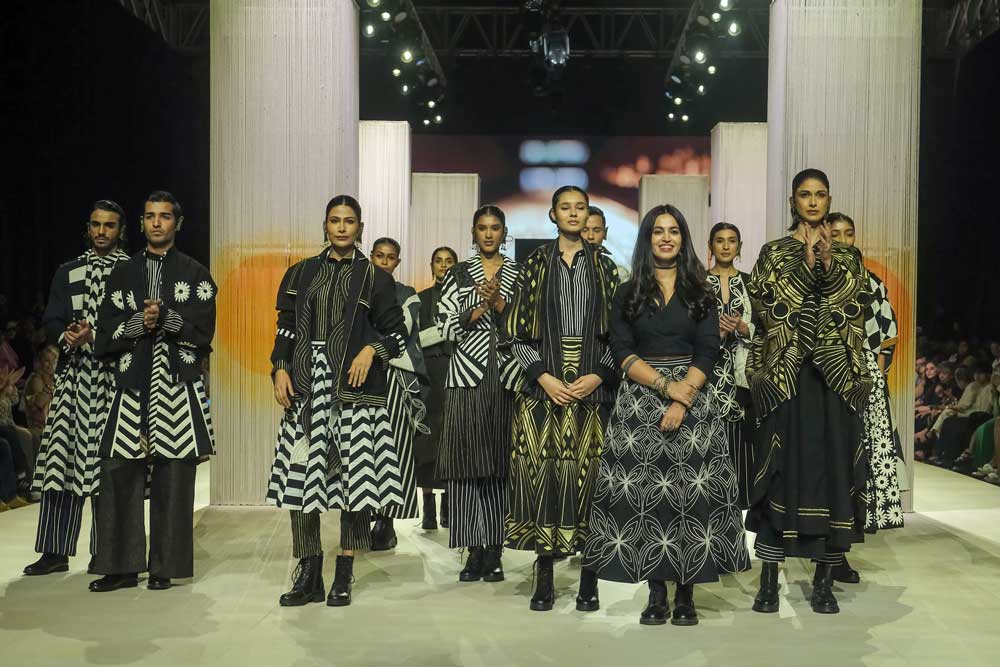
Circular Fashion Takes Centre Stage
The Circular Design Challenge winner, Rkive City, stunned the audience with its edgy yet tailored collection crafted entirely from recycled post-consumer waste, proving that sustainability can be both stylish and street-smart.
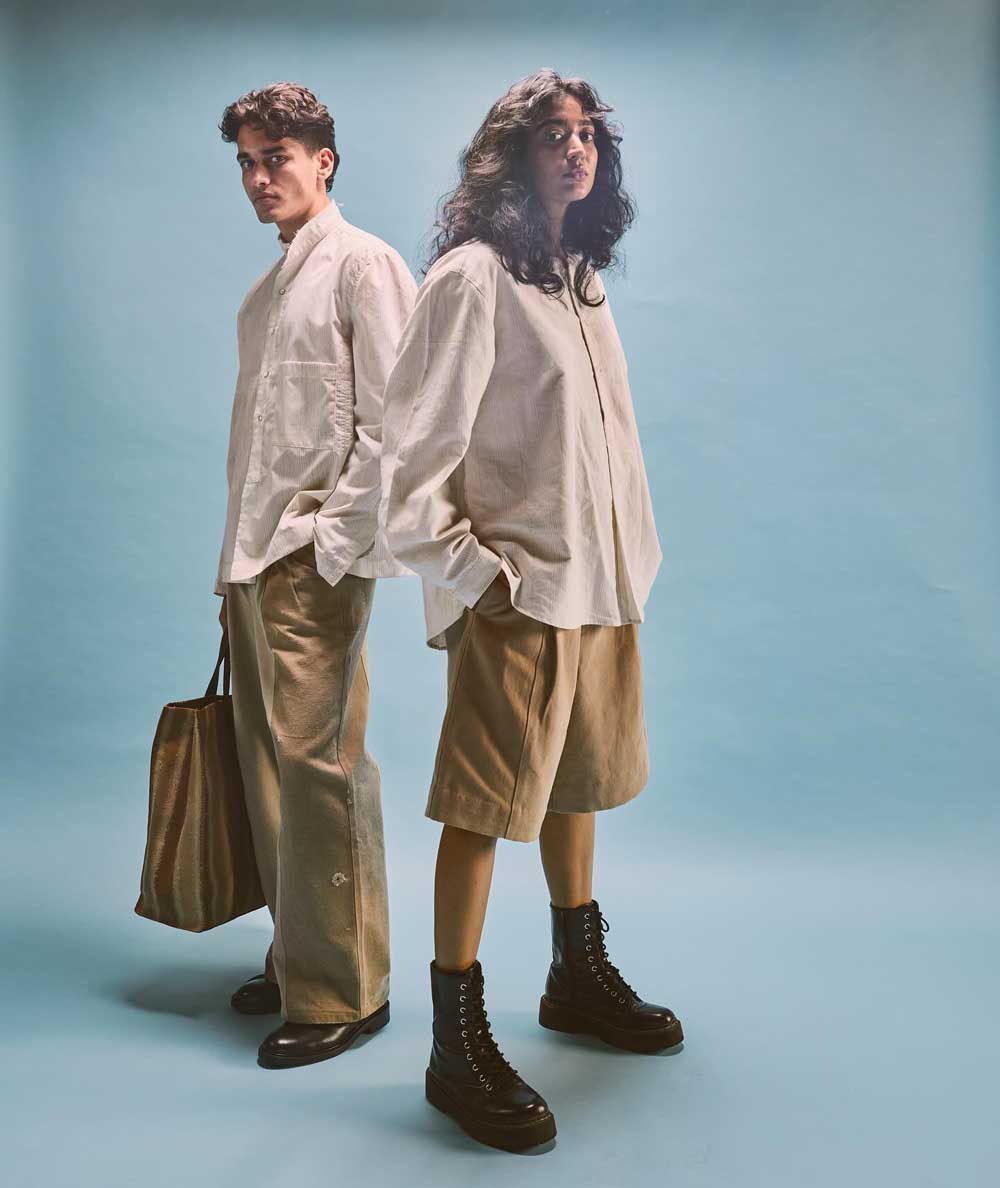
Image Source: Instagram/lakmefashionwk
Beyond the runway, sustainability was discussed in depth at the Canopy Planet panel. The panel, moderated by Journalist and Sustainability Specialist Namrata Zakaria included speakers Nicolery Croft (Executive Director, Canopy), Sara Maino (Creative Director, Fondazione Sozzani), designers Amit Aggarwal and Urvashi Kaur. The panel focused on the future of new-generation materials and circularity-based innovations in fashion.

Image Source: Instagram/lakmefashionwk
Artisan-Driven Narratives
Craftsmanship remained at the heart of many showcases. Five artisan designers from Somaiya Kala Vidya brought forth collections deeply rooted in their respective crafts:
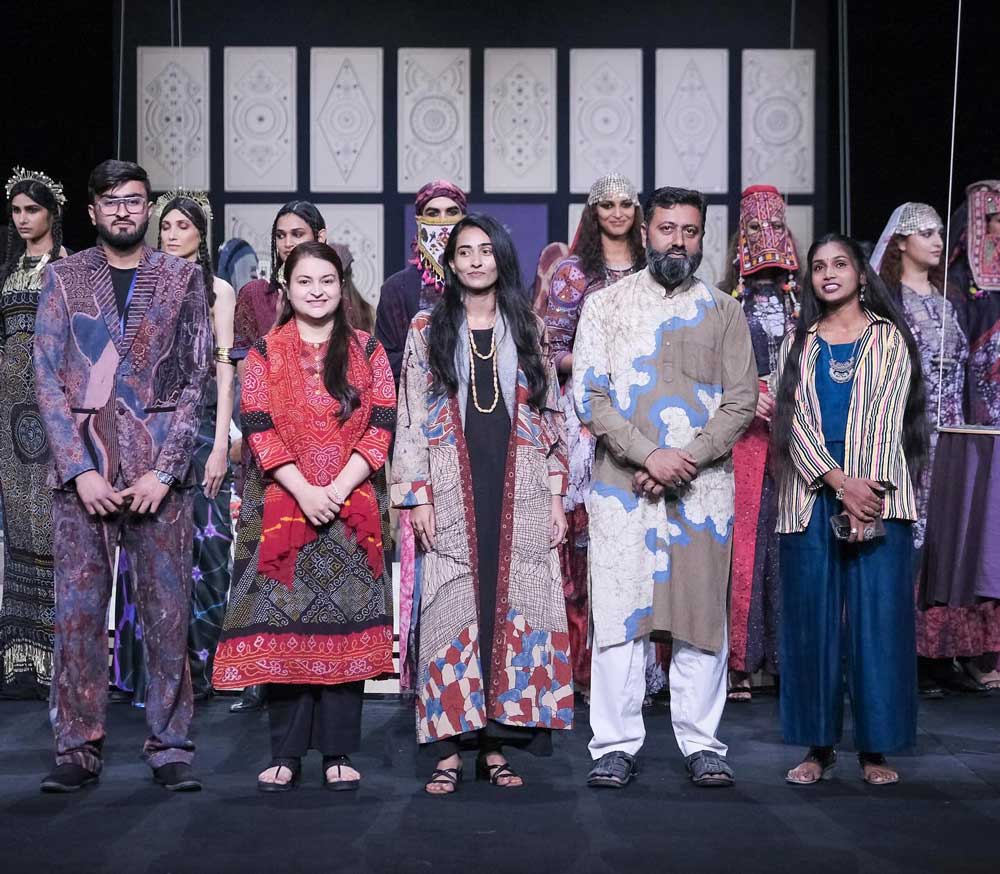
Image Source: Instagram/lakmefashionwk
Zaid Khatri modernised Ajrakh with contemporary motifs.
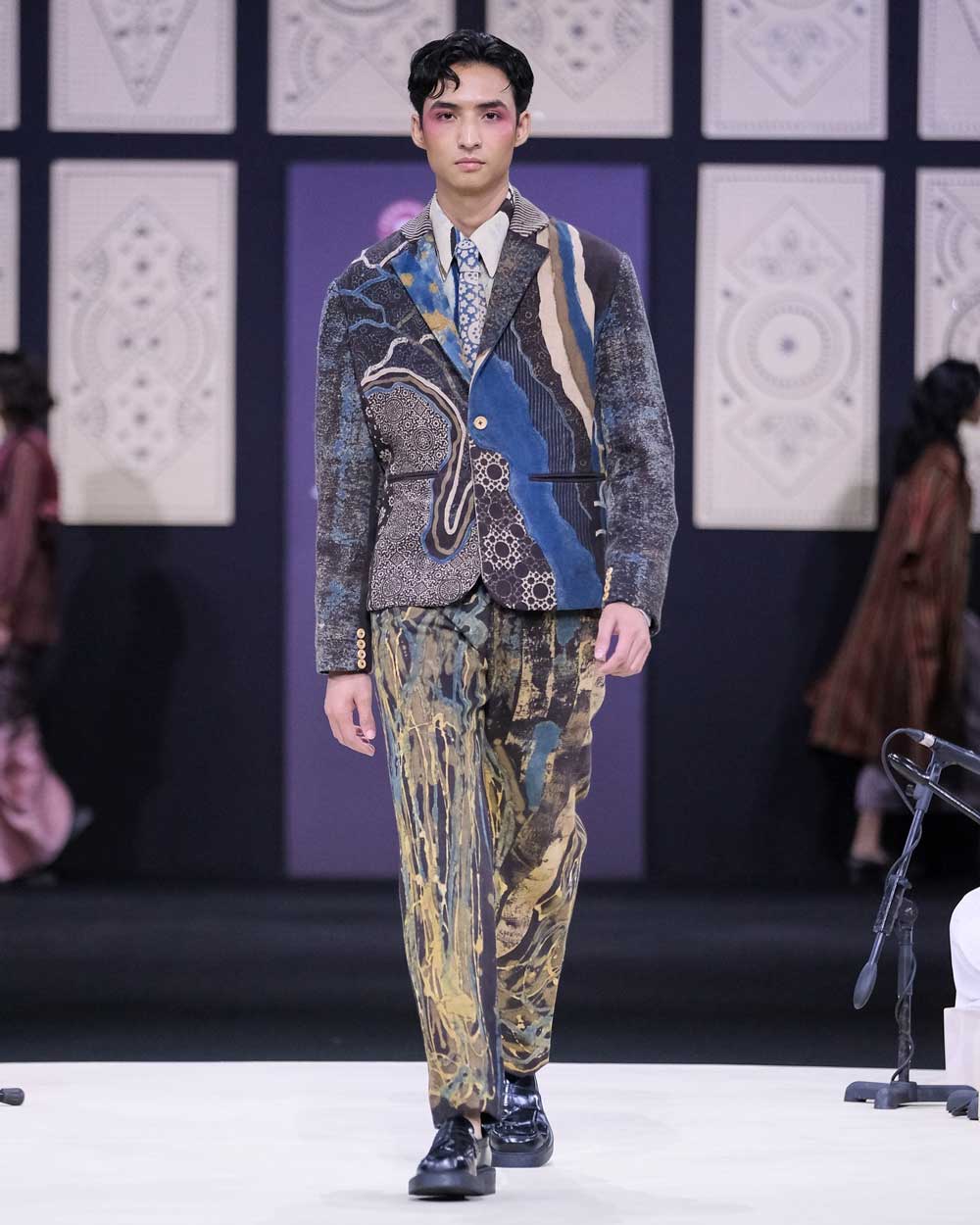
Image Source: Instagram/lakmefashionwk
Shakil Ahmed presented abstract Batik, merging tradition with innovation.
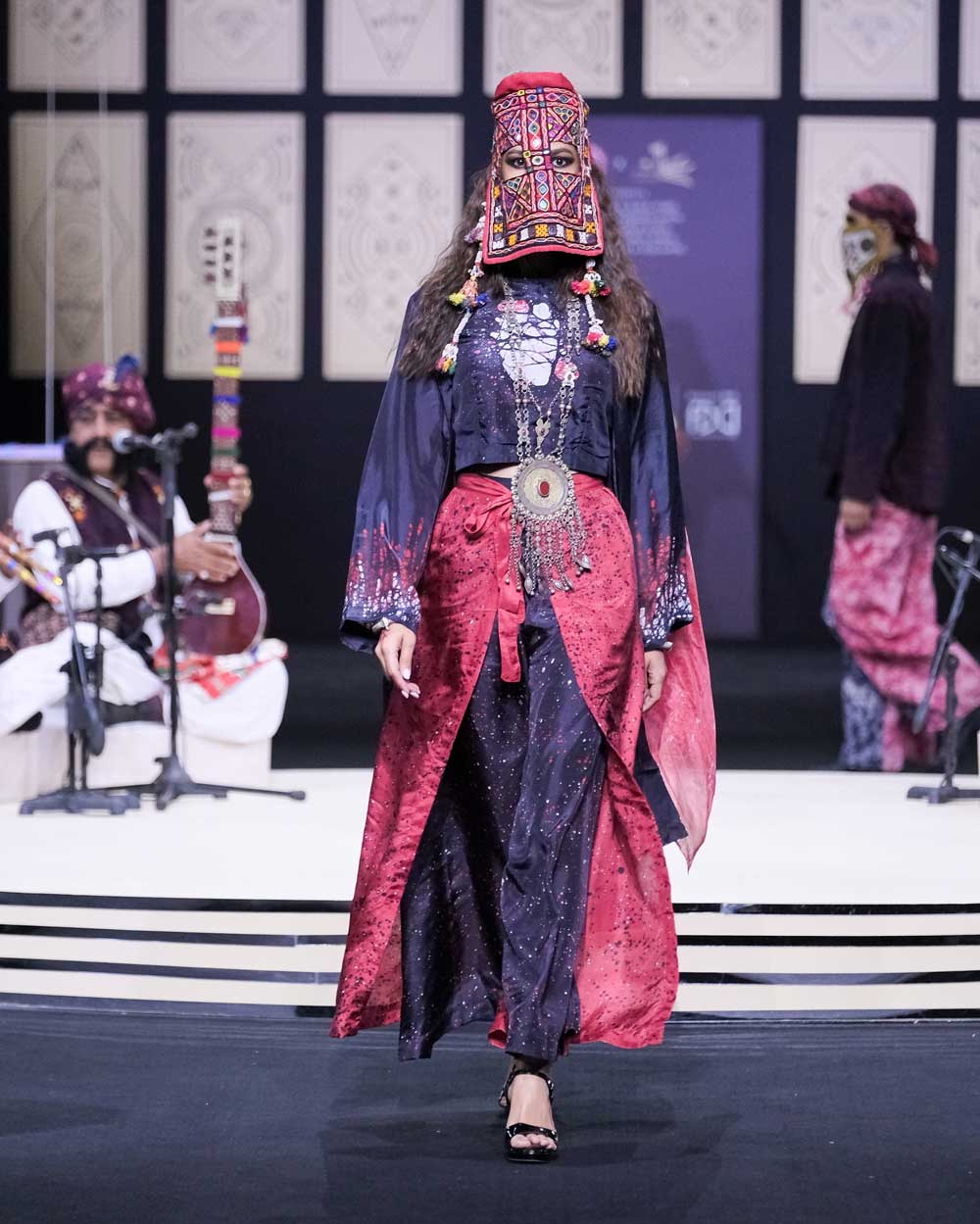
Image Source: Instagram/lakmefashionwk
Muskan Khatri reimagined Bandhani with celestial-inspired patterns.
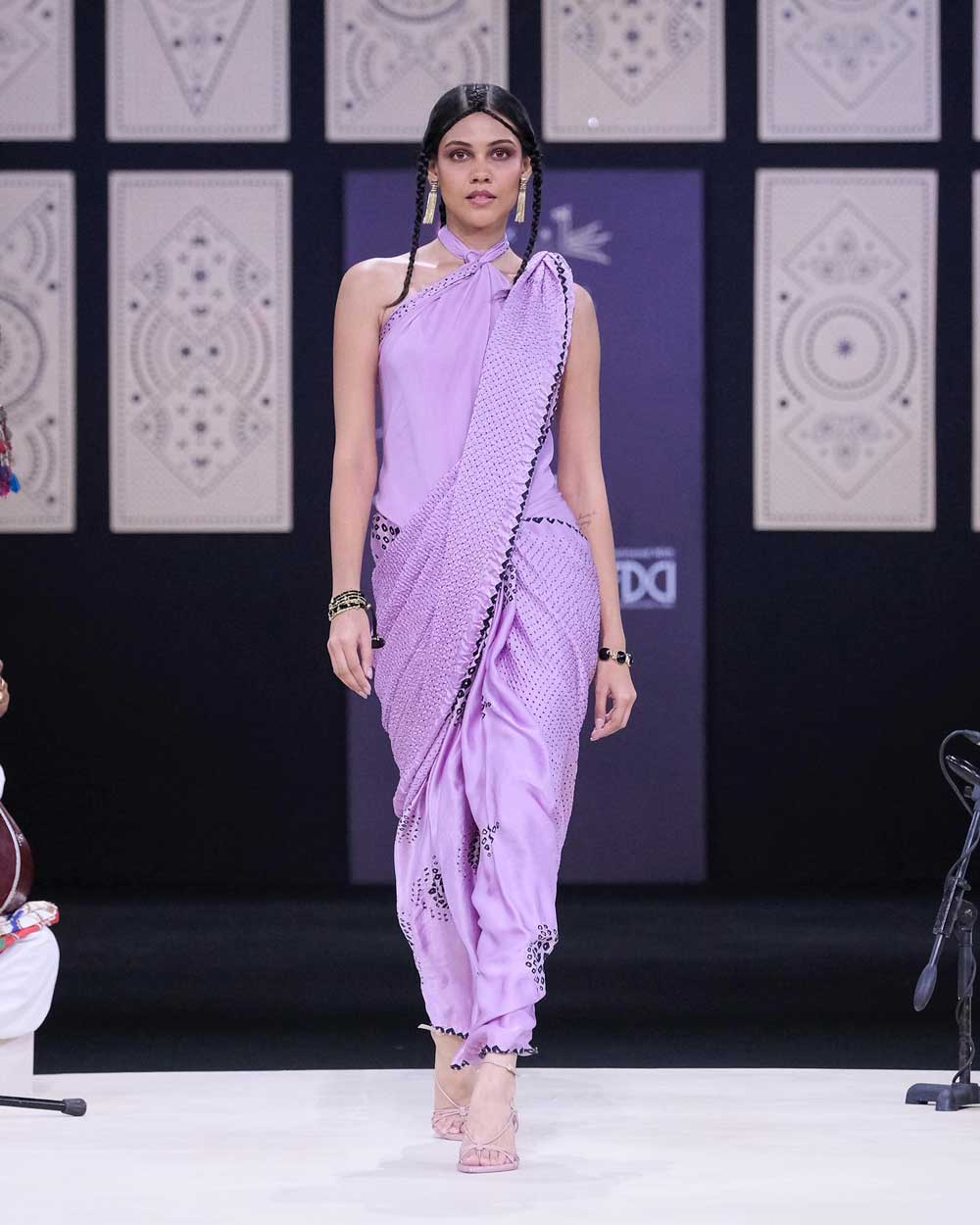
Image Source: Instagram/lakmefashionwk
Mubbasirah Khatri used Ajrakh to depict human anatomy in fluid designs.
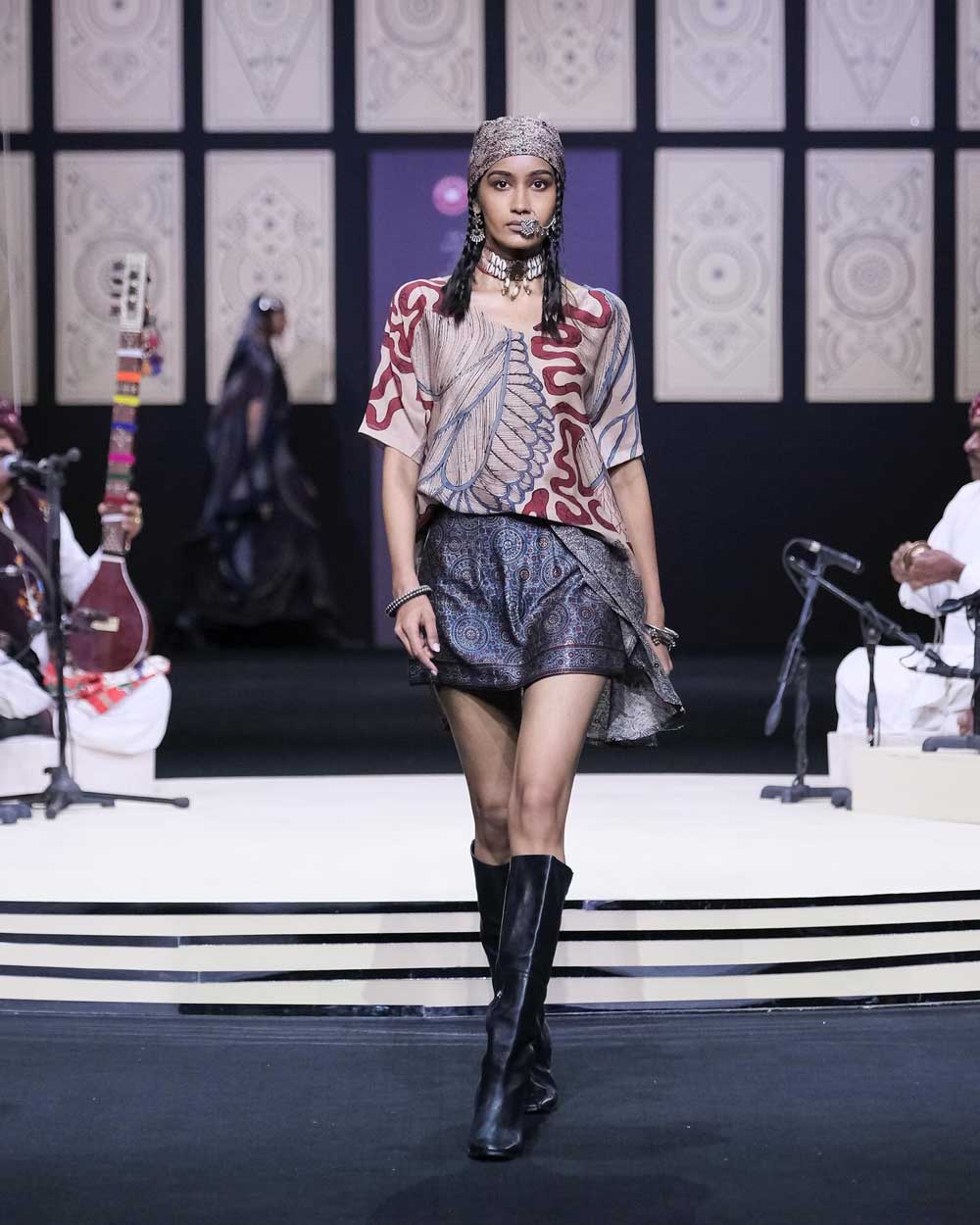
Image Source: Instagram/lakmefashionwk
Amrita Vankar celebrated Mashru silk, highlighting its rarity and craftsmanship.
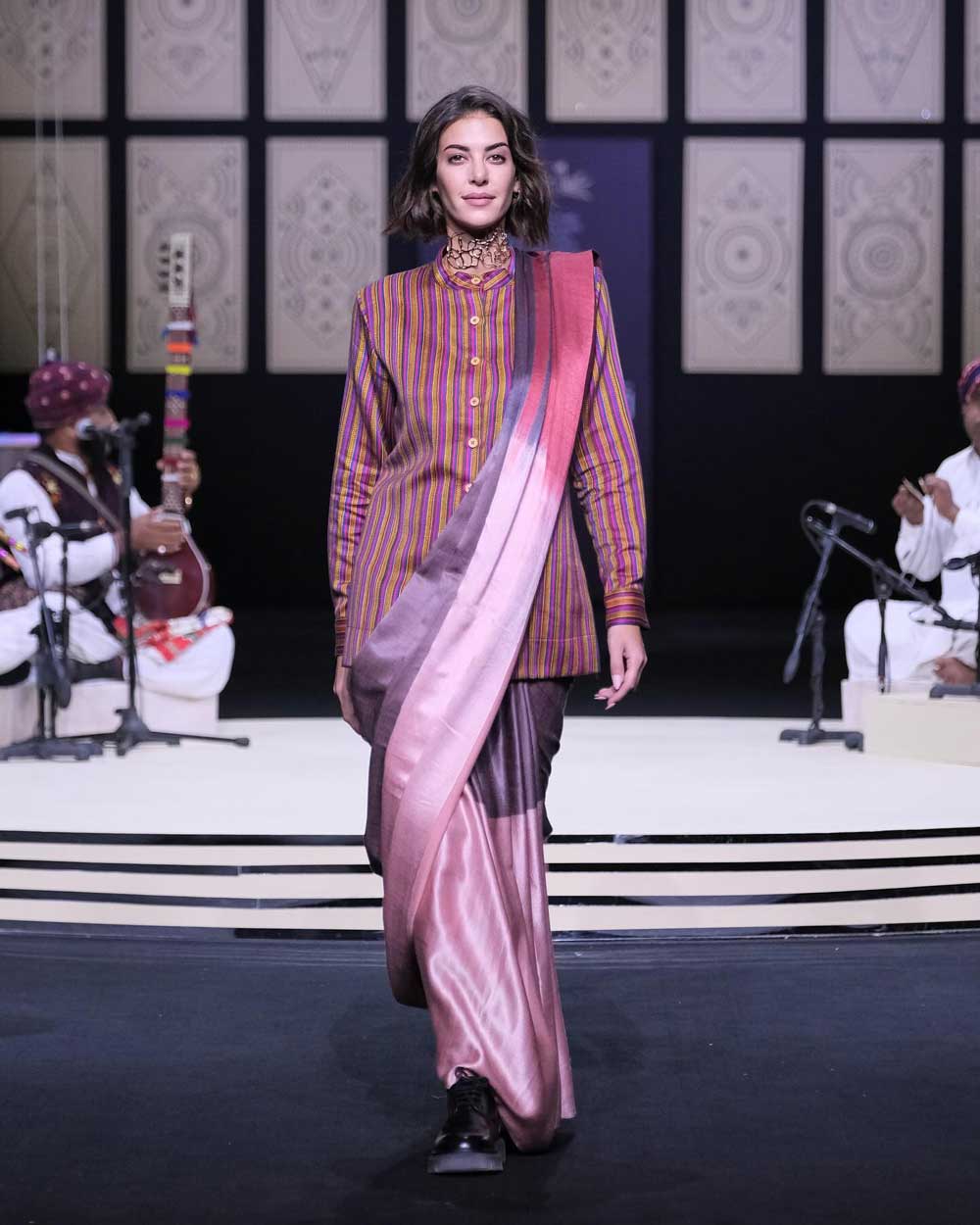
Image Source: Instagram/lakmefashionwk
Amit Aggarwal’s showcase paid tribute to Banarasi textiles, transforming them into modern silhouettes. The show concluded with Bhumi Pednekar donning a corset crafted from recycled Banarasi saris, reinforcing the idea of upcycling luxury textiles.
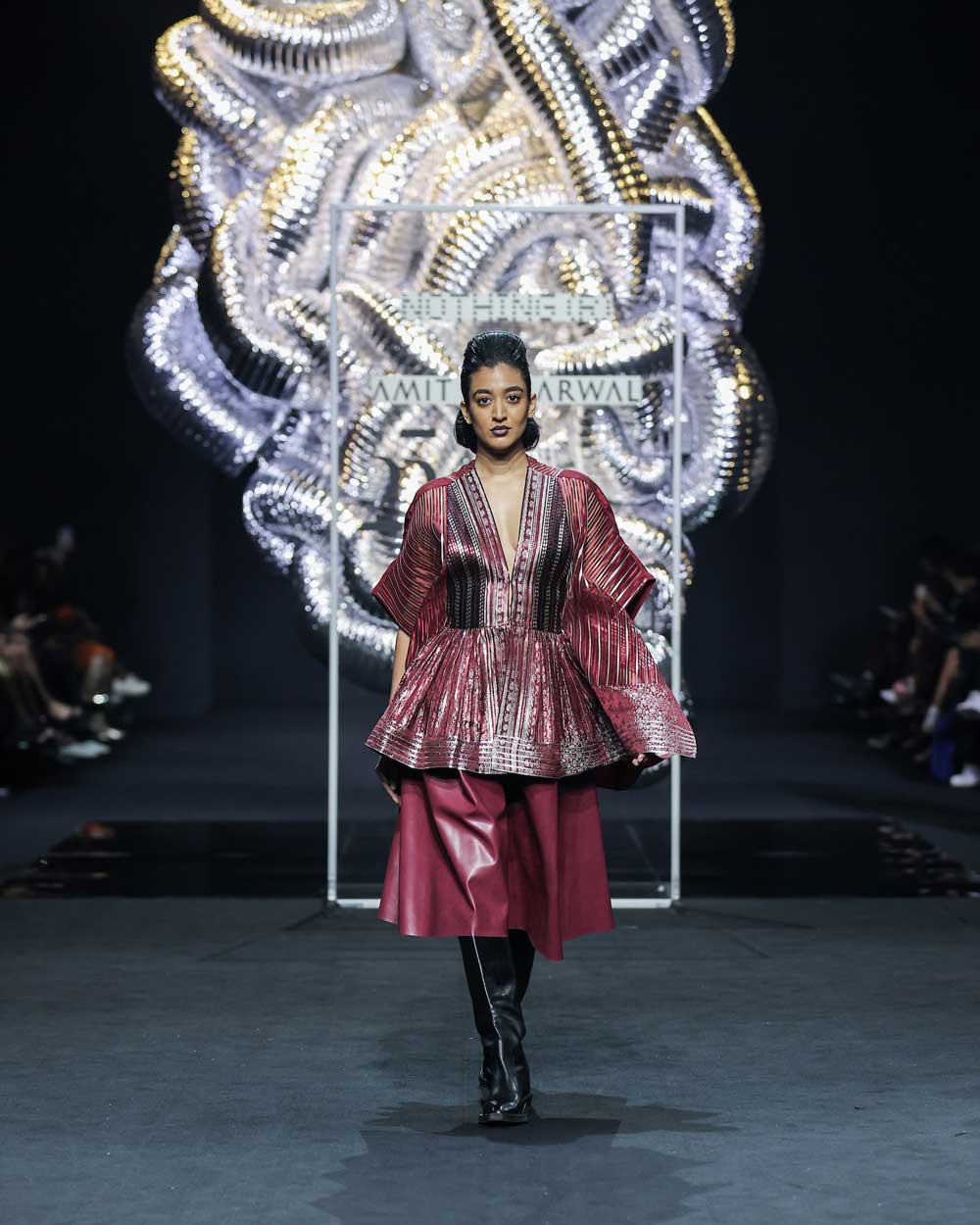
Image Source: Instagram/lakmefashionwk
The Intersection of Innovation and Craft
Mohammed Mazhar drew inspiration from Saharanpur’s wood carving craft, incorporating handcrafted textures, draped silhouettes, and sculpted wooden accessories.

Image Source: Instagram/lakmefashionwk
Stoïque’s collection emphasised conscious techniques, weaving upcycled textile strips into embroidered motifs, layered designs, and bold colour palettes.
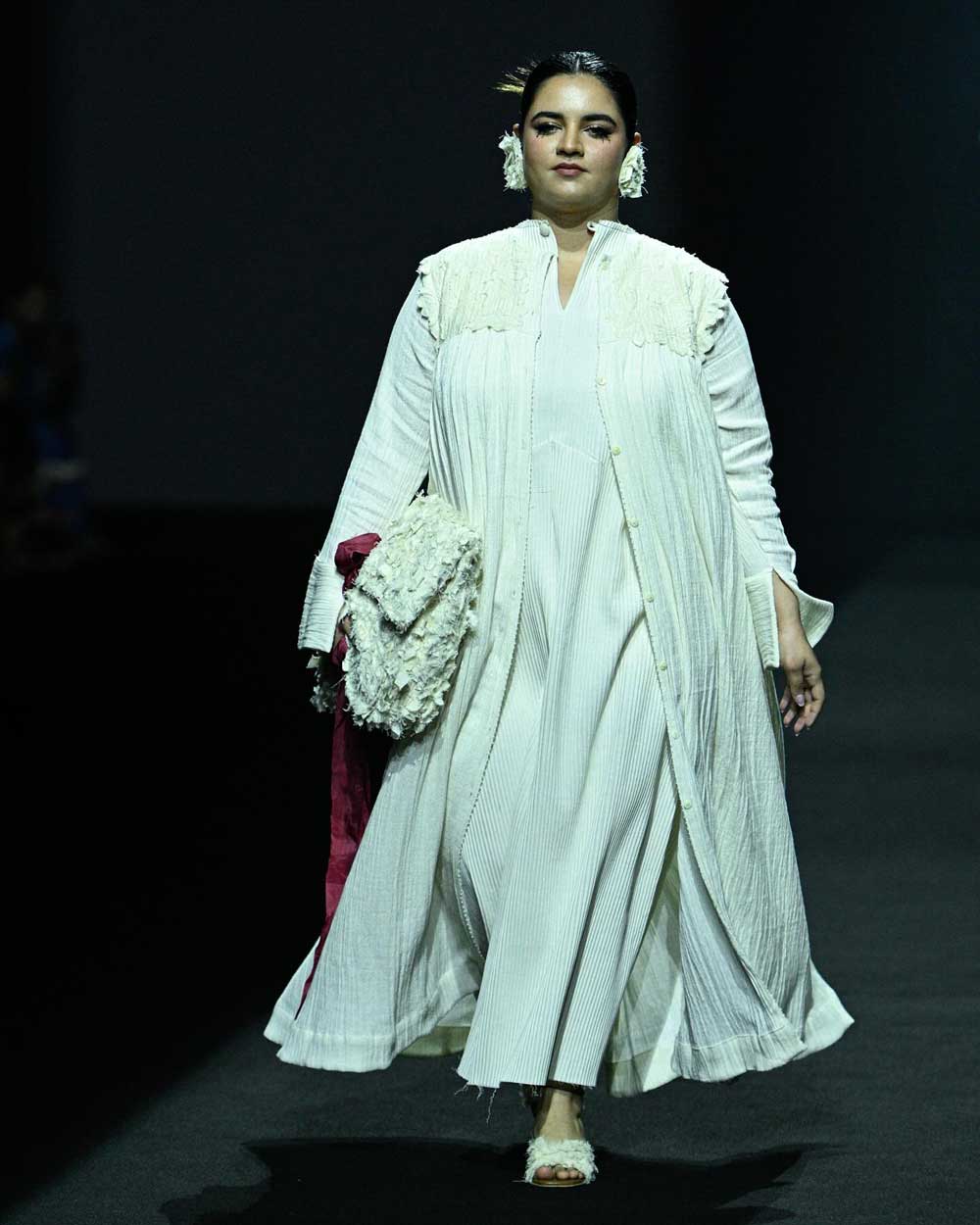
Image Source: Instagram/lakmefashionwk
Namrata Joshipura redefined athleisure by using R|Elan’s high-performance, moisture-wicking Kooltex fabric and its recycled Greengold textile, merging comfort with sustainability.
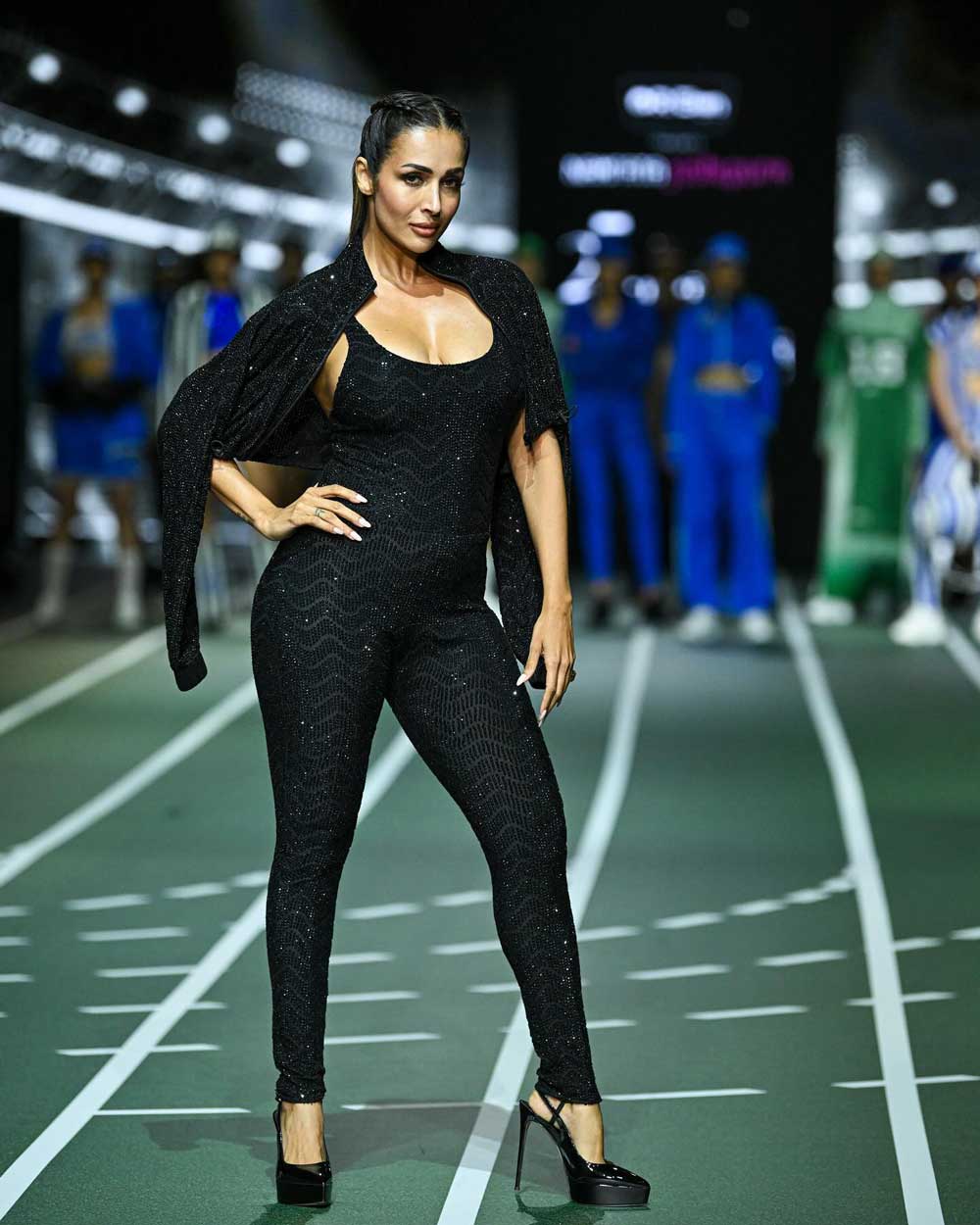
Image Source: Instagram/lakmefashionwk
Beyond the fashion collections, Lakmé Fashion Week itself embraced circularity—guest passes were collected for recycling into new fabric by R|Elan, setting a precedent for sustainable event management.
Saaksha & Kinni’s ‘Myrah’, inspired by Gujarat’s Adalaj Stepwell, Myrah paid homage to heritage through intricate floral and geometric prints. Sunlit hues of sandstone, deep blues, and vibrant reds dominated the collection, featuring fluid dresses, ethereal kaftans, and tailored jackets designed for the contemporary traveller.
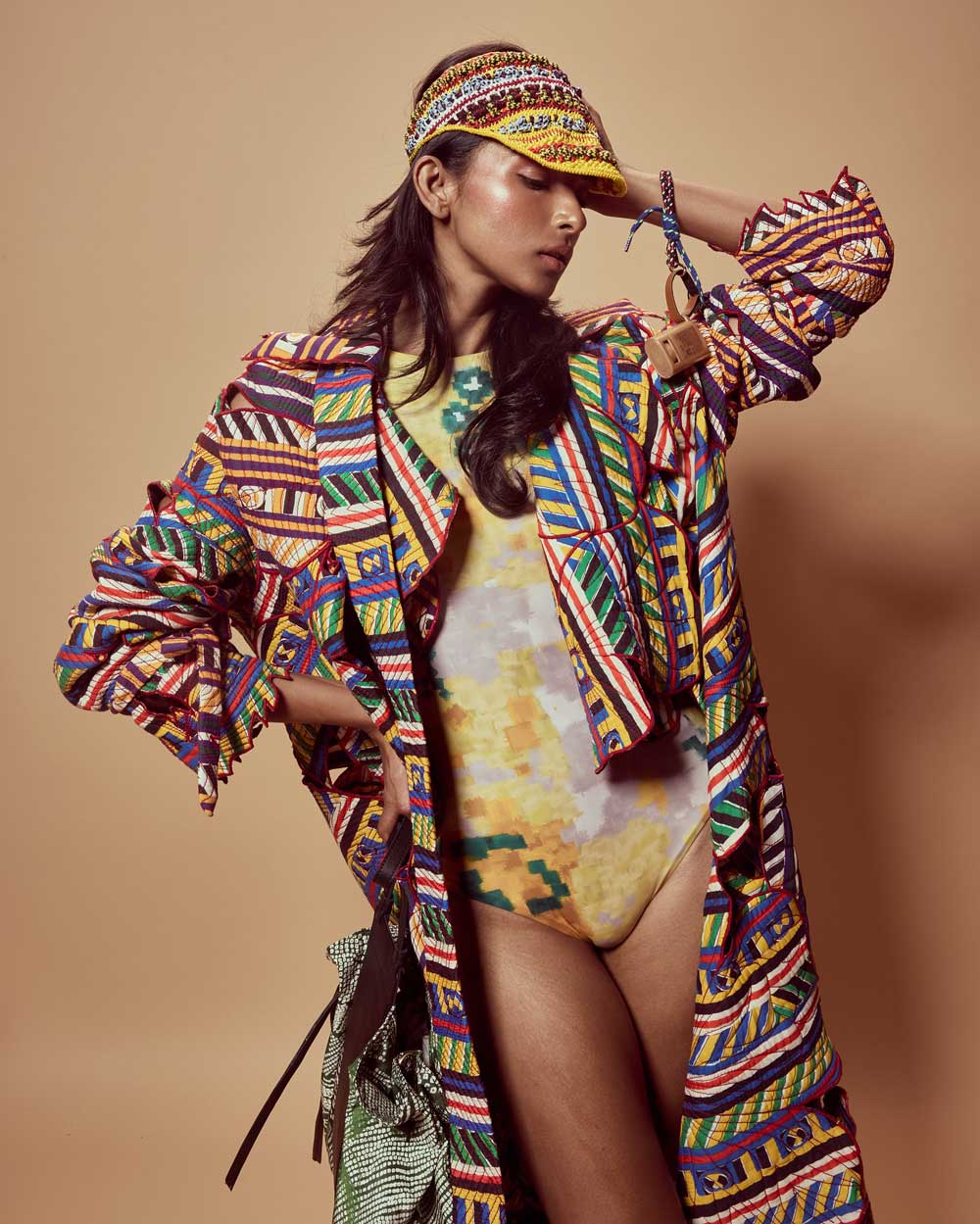
Image Source: Instagram/lakmefashionwk
Closing Day 4, Rahul Mishra’s collection ‘The Silk Route’ for AFEW explored the cultural and artistic exchanges along the ancient Silk Route. His designs seamlessly merged Indian craftsmanship with global influences, incorporating traditional techniques like Bandhani and Shibori.
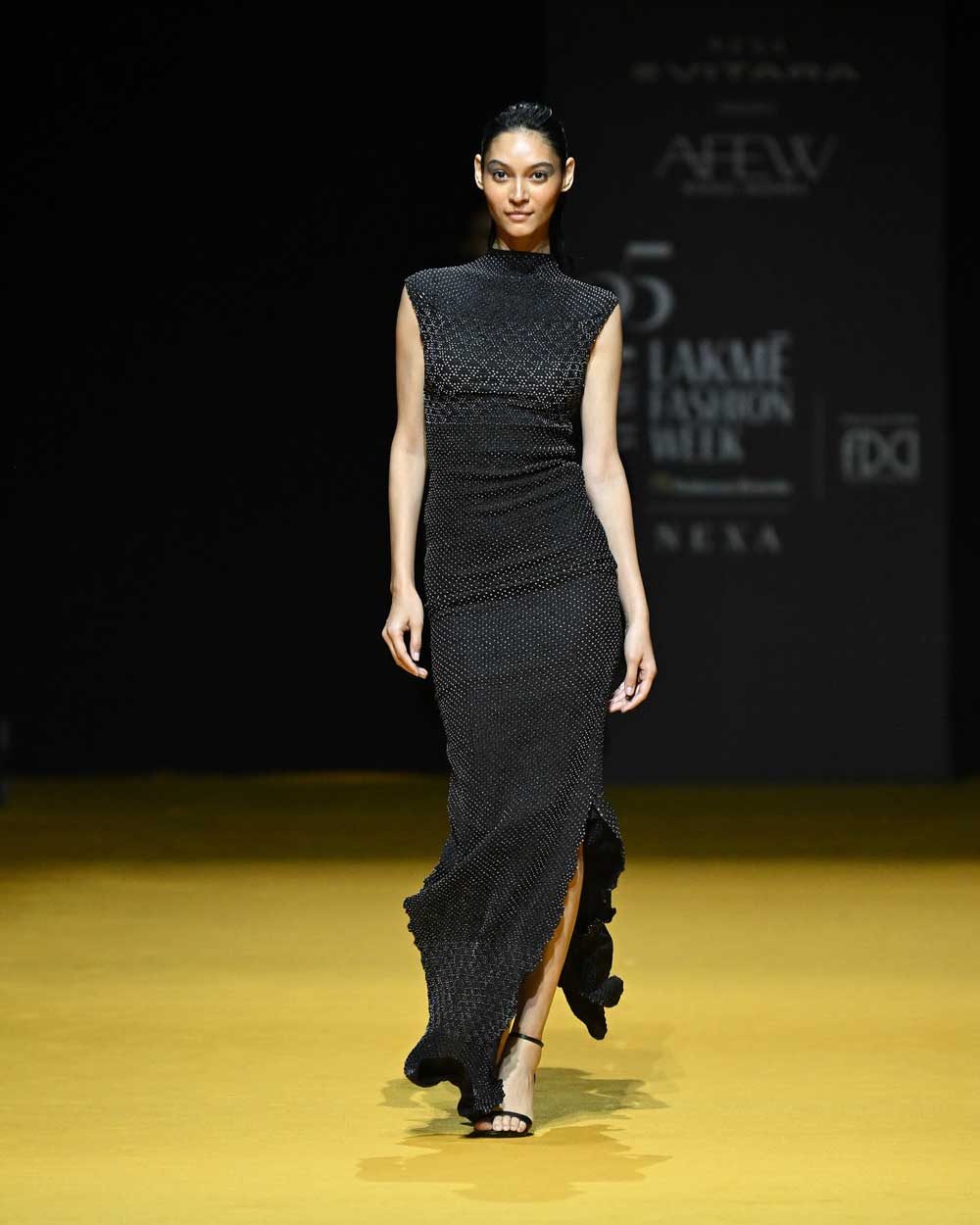
Image Source: Instagram/lakmefashionwk
The Future of Fashion is Sustainable
Lakmé Fashion Week 2025 demonstrated that sustainability is the fashion industry's future, not just a fad. The event raised the bar for ethical fashion by emphasizing handcrafted textiles, upcycled materials, and circular design. Fashion is getting closer to a day when it will be both responsible and beautiful as long as designers keep fusing innovation and tradition.